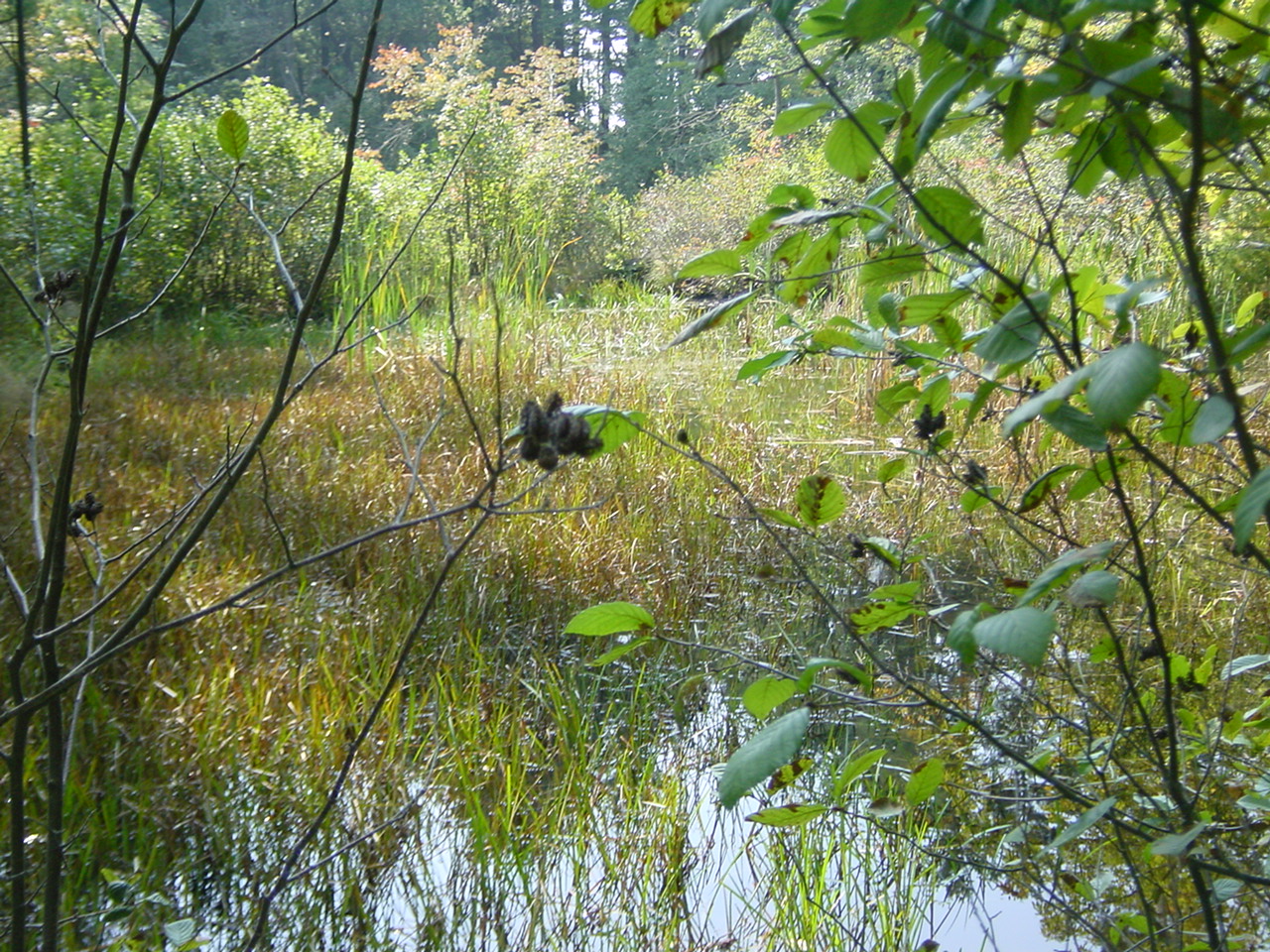Wetlands, Vernal Pools and Forestry Operations In Massachusetts

Description
Forestry operations if conducted improperly can cause significant NPS pollution impacts to wetlands and vernal pools. All forest harvesting activities that take place within 100 feet of a wetland resource area must receive either an exemption to or a permit under MGL Chapter 131the Wetlands Protection Act. A properly filed, approved, and followed Forest Cutting Plan provides an exemption to the normal filing requirements of the Wetlands Protection Act. The Forest Cutting Plan details the BMPs to be used to prevent impacts to wetlands and vernal pools during forestry operations.
Wetlands perform many water quality functions including serving as a filter to allow sediment to become trapped and deposited. However, this function may be compromised by excessive pollutant loads, which in turn may cause wetlands to become sources of non-point source pollution, and impair other wetland functions. It is important to keep sediment out of wetlands, so as to not impair their function as filters. Runoff from roads, skid trails, and landings should not be directed into wetlands.
The Massachusetts Forest Cutting Practices Act (MGL Chapter 132) has specific requirements for protecting wetlands and vernal pools during forestry operations.
Massachusetts Requirements and Recommendations
Wetlands
All forest harvesting activities that take place within 100 feet of a wetland resource area must receive either an exemption to or a permit under MGL Chapter 131the Wetlands Protection Act. A properly filed, approved, and followed Forest Cutting Plan provides an exemption to the normal filing requirements of the Wetlands Protection Act.
Wetlands that will be crossed, logged in, or are adjacent to any harvesting activity must be accurately shown and labeled on the Forest Cutting Plan map. Any crossings must be identified on the ground with paint or flagging. Roads through wetlands approved under Chapter 132 Forest Cutting Practices Act are temporary. Permanent roads through wetlands require Conservation Commission approval under Chapter 131 Wetlands Protection Act through the filing of a Notice of Intent.
- Timber harvesting in wetlands is restricted to times when the weather is dry, the wetland frozen, or is otherwise stable. When these conditions are not met, the Forest Cutting Plan requires special approval by the DCR Service Forester, after showing how the operation will avoid significant environmental damage. Only 50% of the basal area in the wetland can be harvested.
- If the wetland crossing needs to change during the operation, the DCR Service Forester must approve the change before it is made.
Vernal Pools
- A vernal pool is a confined basin depression which, in most years, holds water for at least two continuous months during the spring and/or summer, and which is free of adult fish populations. These areas provide essential breeding habitat for a variety of amphibian species such as wood frogs, spotted salamanders, and other important wildlife species. Certified Vernal Pools are those that have been certified by the Massachusetts Division of Fish and Game. For information on the location of Certified Vernal Pools, contact The Natural Heritage and Endangered Species Program.
- Forest harvesting must maintain a filter strip 50 feet in width around a Certified Vernal Pool, measured from its edge along the slope. No more than 50% of the basal area in the filter strip may be cut at any time, and a waiting period of five years must elapse before another cut is made.
- If the filter strip to the vernal pool has a slope of 30% or greater, then the filter strip must be increased to 100 feet or to the point beyond 50 feet from the pool where the topographic slope is once again less than 30%.
- No forestry equipment is allowed to operate in the depression of the Certified Vernal Pool.
- Tree tops and slash must be kept from the depression of the Certified Vernal Pool.
References
Kittredge Jr., D. B. and M. Parker. 1995. Massachusetts Forestry Best Management Practices Manual. MADEP and USEPA-Region 1, Water Division, Water Quality Section.
MADEP. 2001. The Massachusetts Unpaved Roads BMP Manual. Project 98-06/319. USDA. 2002. Massachusetts Forest Resource Fact Sheet. Northeastern Area State and Private Forestry. USEPA. 1993. Polluted Runoff (Nonpoint Source Pollution): Guidance Specifying Management Measures for Sources of Nonpoint Pollution in Coastal Waters. EPA-840-B-93-001c. Office of Wetlands, Oceans, and Watersheds. http://www.epa.gov/owow/nps/MMGI
USEPA. 1995. Polluted Runoff (Nonpoint Source Pollution): Planning Considerations for Roads, Highways, and Bridges. EPA-841-F-95-008b. Office of Water.